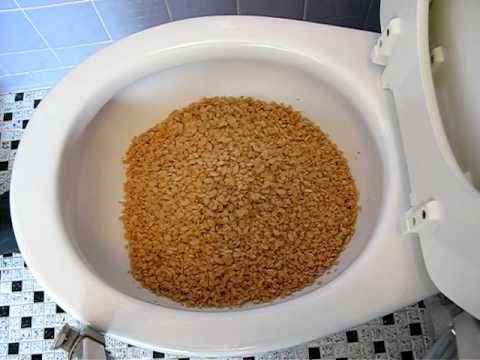Can One to Flush Food in the Toilet?
Can One to Flush Food in the Toilet?
Blog Article
This post directly below relating to Is it safe to flush food (especially rice) down the toilet? is without a doubt enlightening. Read it for yourself and see what you think about it.

Intro
Many people are frequently confronted with the problem of what to do with food waste, specifically when it concerns leftovers or scraps. One typical concern that emerges is whether it's okay to flush food down the bathroom. In this write-up, we'll look into the reasons why people may think about flushing food, the consequences of doing so, and different techniques for proper disposal.
Reasons that people could think about flushing food
Absence of awareness
Some individuals might not be aware of the prospective harm triggered by purging food down the bathroom. They may incorrectly think that it's a harmless method.
Benefit
Flushing food down the toilet may appear like a fast and easy option to taking care of unwanted scraps, particularly when there's no close-by trash can available.
Negligence
In some cases, individuals might just select to flush food out of sheer laziness, without considering the consequences of their actions.
Effects of flushing food down the bathroom
Environmental influence
Food waste that winds up in rivers can contribute to air pollution and damage aquatic ecosystems. In addition, the water made use of to flush food can stress water resources.
Pipes issues
Purging food can lead to clogged pipelines and drains pipes, triggering pricey plumbing repair services and troubles.
Sorts of food that ought to not be purged
Coarse foods
Foods with fibrous textures such as celery or corn husks can get entangled in pipes and cause blockages.
Starchy foods
Starchy foods like pasta and rice can soak up water and swell, bring about blockages in pipelines.
Oils and fats
Greasy foods like bacon or food preparation oils need to never ever be purged down the commode as they can solidify and cause obstructions.
Correct disposal approaches for food waste
Using a garbage disposal
For homes equipped with waste disposal unit, food scraps can be ground up and purged with the plumbing system. However, not all foods are suitable for disposal in this manner.
Recycling
Particular food packaging products can be reused, reducing waste and decreasing environmental impact.
Composting
Composting is an eco-friendly means to get rid of food waste. Organic products can be composted and utilized to improve soil for horticulture.
The significance of correct waste management
Minimizing ecological harm
Appropriate waste monitoring practices, such as composting and recycling, assistance decrease air pollution and protect natural deposits for future generations.
Protecting plumbing systems
By staying clear of the practice of flushing food down the toilet, homeowners can prevent costly plumbing fixings and maintain the integrity of their plumbing systems.
Final thought
To conclude, while it might be appealing to flush food down the toilet for convenience, it is necessary to comprehend the possible repercussions of this activity. By taking on correct waste management practices and disposing of food waste responsibly, individuals can contribute to much healthier pipes systems and a cleaner setting for all.
FLUSH FOOD DOWN THE TOILET?
FLUSHING FOOD CAN CAUSE BLOCKED DRAINS IN YOUR HOME
All of the plumbing fixtures in your home are connected to the same sewer pipe outside of your home. This outdoor sewer pipe is responsible for transporting all the wastewater from your home to the Council sewer mains. Even small pieces of food that go down the kitchen sink can cause problems for your sewer. It should therefore be obvious that flushing larger bits of food, such as meat, risks a clog in either the toilet itself or the sewer pipes. Flushing greasy food is even more problematic because oil coagulates when it cools, coating the interior lining of your pipes.
THE TOILET IS NOT A BIN
Food isn’t the only thing that people shouldn’t be flushing down the toilet. People use the toilet to dispose of all kinds of things such as tampons, makeup wipes, dental floss, kitty litter and even underwear. Water goes to great lengths to educate residents about the high costs and stress placed on wastewater treatment systems simply from people flushing the wrong stuff down the toilet. It costs taxpayers millions of dollars each year, and homeowners thousands in blocked drain repairs.
FLUSHING FOOD IS A WASTE OF WATER
Flushing food is a waste of our most precious resource - water. In June this year Level 1 water restrictions were introduced to protect water supply from drought conditions. Much of New South Wales continues to be affected by prolonged drought with recent figures revealing up to 97 per cent of the state remains in drought. Depending on whether you have a single or dual flush toilet, every single flush uses between five and 11 litres of water. In the current climate this is a huge amount of water to be wasting on flushing food that should be placed in the bin (or better yet, the compost).
https://www.jabplumbingsolutions.com.au/blog/can-you-flush-food-down-the-toilet

I'm very excited about Flushing Food Down the Toilet? and I'm hoping you enjoyed our entry. Sharing is nice. You never know, you could be doing someone a favor. Thanks so much for going through it.
Click Here Report this page